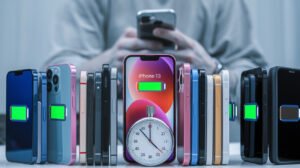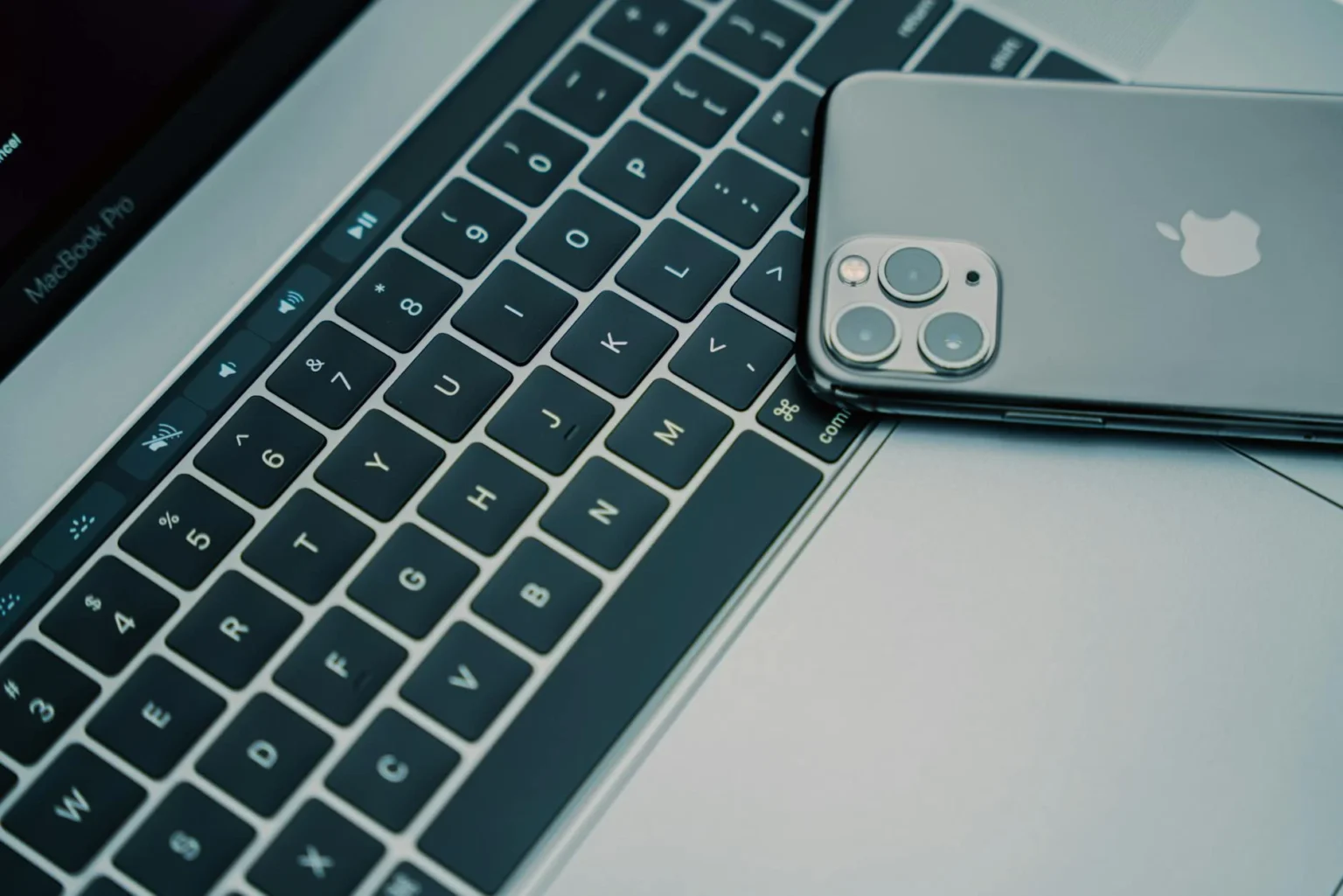🔋 Is your smartphone’s battery life leaving you constantly tethered to a charger? You’re not alone. In today’s digital age, a long-lasting battery has become the holy grail of smartphone features. Enter the iPhone 13, Apple’s latest contender in the Battery Life Battles.
But how does it really stack up against the competition? 🤔 Whether you’re a loyal Apple fan or considering a switch, understanding the battery performance of the iPhone 13 compared to its rivals is crucial. After all, no one wants to be left powerless during that important call or while capturing that perfect moment.
iPhone 13’s Battery Life Improvements
The iPhone 13 series has made significant strides in battery life, offering users extended usage time and improved overall performance. Let’s delve into the key factors contributing to these enhancements:
A. Enhanced Power Efficiency
Apple has implemented several power efficiency improvements in the iPhone 13, resulting in longer battery life:
- Optimized display technology
- Improved power management system
- More efficient cellular and Wi-Fi connectivity
B. iOS 15 Power-Saving Features
iOS 15 introduces new power-saving features that contribute to extended battery life:
- Low Power Mode enhancements
- App background refresh optimization
- Intelligent charging algorithms
C. A15 Bionic Chip Optimization
The A15 Bionic chip plays a crucial role in maximizing battery efficiency:
| Feature | Benefit |
|---|---|
| Advanced neural engine | Faster processing with less power consumption |
| Improved CPU cores | More efficient task handling |
| Enhanced GPU performance | Better graphics rendering with lower energy usage |
D. Larger Battery Capacity
Apple has increased the physical battery size in the iPhone 13 series:
- iPhone 13 Mini: 9% larger than iPhone 12 Mini
- iPhone 13: 15% larger than iPhone 12
- iPhone 13 Pro: 11% larger than iPhone 12 Pro
- iPhone 13 Pro Max: 18% larger than iPhone 12 Pro Max
These improvements collectively result in significant battery life gains across the iPhone 13 lineup, with users experiencing up to 2.5 hours of additional usage time compared to their iPhone 12 counterparts.
Top Competitors in Battery Life

When it comes to battery life, the iPhone 13 faces stiff competition from several Android flagships. Let’s explore some of the top contenders:
A. Xiaomi Mi 11
The Xiaomi Mi 11 boasts a large 4,600mAh battery, which provides impressive longevity. Its efficient Snapdragon 888 processor and adaptive refresh rate display contribute to extended usage times.
B. OnePlus 9 Pro
Known for its fast charging capabilities, the OnePlus 9 Pro also delivers solid battery life with its 4,500mAh cell. The device’s OxygenOS optimizations help manage power consumption effectively.
C. Google Pixel 6 Pro
Google’s Pixel 6 Pro features a 5,003mAh battery, one of the largest in its class. The custom Tensor chip and adaptive battery features work together to maximize battery efficiency.
D. Samsung Galaxy S21 Ultra
The Galaxy S21 Ultra comes equipped with a substantial 5,000mAh battery. Samsung’s power management software and the device’s variable refresh rate display contribute to its long-lasting performance.
Here’s a comparison of these devices’ battery capacities:
| Device | Battery Capacity |
|---|---|
| iPhone 13 | 3,227mAh |
| Xiaomi Mi 11 | 4,600mAh |
| OnePlus 9 Pro | 4,500mAh |
| Google Pixel 6 Pro | 5,003mAh |
| Samsung Galaxy S21 Ultra | 5,000mAh |
While battery capacity alone doesn’t tell the whole story, it’s clear that the iPhone 13’s competitors offer larger batteries. However, real-world performance depends on various factors, including software optimization and hardware efficiency. In the next section, we’ll dive deeper into how these devices actually perform in battery life tests and daily usage scenarios.
Battery Performance Comparison
When it comes to battery performance, the iPhone 13 faces stiff competition from other flagship devices. Let’s dive into a detailed comparison across various usage scenarios.
A. Video playback longevity
The iPhone 13 excels in video playback, offering up to 19 hours of continuous video streaming. Here’s how it stacks up against its competitors:
| Device | Video Playback Time |
|---|---|
| iPhone 13 | 19 hours |
| Samsung Galaxy S21 | 15 hours |
| Google Pixel 6 | 14 hours |
| OnePlus 9 Pro | 16 hours |
B. Mixed-use scenarios
For everyday mixed-use, including social media browsing, messaging, and light app usage, the iPhone 13 performs admirably:
- iPhone 13: 11 hours
- Samsung Galaxy S21: 10 hours
- Google Pixel 6: 9.5 hours
- OnePlus 9 Pro: 10.5 hours
C. Gaming endurance
Intensive gaming can drain battery quickly. Here’s how the iPhone 13 fares:
| Device | Gaming Time |
|---|---|
| iPhone 13 | 5 hours |
| Samsung Galaxy S21 | 4.5 hours |
| Google Pixel 6 | 4 hours |
| OnePlus 9 Pro | 5 hours |
D. Web browsing duration
The iPhone 13 leads in web browsing longevity:
- iPhone 13: 15 hours
- Samsung Galaxy S21: 13 hours
- Google Pixel 6: 12 hours
- OnePlus 9 Pro: 14 hours
E. Standby time
In standby mode, the iPhone 13 demonstrates impressive power efficiency:
| Device | Standby Time |
|---|---|
| iPhone 13 | Up to 75 hours |
| Samsung Galaxy S21 | Up to 60 hours |
| Google Pixel 6 | Up to 48 hours |
| OnePlus 9 Pro | Up to 65 hours |
These comparisons highlight the iPhone 13’s strong battery performance across various scenarios. However, it’s important to note that real-world usage may vary based on individual habits and settings
Factors Affecting Battery Life
Now that we’ve compared the battery performance of various devices, let’s delve into the key factors that influence battery life across all smartphones, including the iPhone 13 and its competitors.
A. Battery health and age
As batteries age, their capacity to hold a charge diminishes. This natural degradation process affects all lithium-ion batteries, regardless of the device brand. Here’s a quick overview of battery health decline:
- New battery: 100% capacity
- After 1 year: ~90-95% capacity
- After 2 years: ~80-85% capacity
| Age | Capacity |
|---|---|
| New | 100% |
| 1 year | 90-95% |
| 2 years | 80-85% |
B. Background app activity
Apps running in the background can significantly drain your battery. Some common culprits include:
- Social media apps
- Location services
- Push notifications
- Automatic app updates
C. Network connectivity (5G vs. 4G)
The type of network connection your phone uses can impact battery life:
- 5G: Faster speeds but higher power consumption
- 4G: Lower speeds but more energy-efficient
- Wi-Fi: Generally the most battery-friendly option
| Connection | Speed | Battery Impact |
|---|---|---|
| 5G | Fastest | Highest |
| 4G | Fast | Moderate |
| Wi-Fi | Varies | Lowest |
D. Screen brightness and refresh rate
Display settings play a crucial role in battery consumption:
- Higher brightness levels drain the battery faster
- Higher refresh rates (e.g., 120Hz) provide smoother visuals but use more power
With these factors in mind, it’s clear that battery life isn’t solely determined by the device’s specifications. User habits and settings also play a significant role.
Battery Saving Tips for All Devices

Now that we’ve compared the battery performance of various devices, let’s explore some universal tips to extend battery life across all smartphones.
Regular software updates
Keeping your device’s software up-to-date is crucial for optimal battery performance. Updates often include:
- Bug fixes
- Performance improvements
- Battery optimization features
Make sure to enable automatic updates or check for them regularly in your device settings.
Using power-saving modes
Most modern smartphones come equipped with power-saving modes. These features can significantly extend battery life by:
- Limiting background processes
- Reducing screen brightness
- Disabling certain features like GPS or 5G
| Power-saving mode | Typical battery life extension |
|---|---|
| Low Power Mode | Up to 3 hours |
| Ultra Power Saving | Up to 24 hours |
Managing app permissions
Controlling which apps have access to your device’s resources can help conserve battery life. Here’s what you can do:
- Review app permissions regularly
- Restrict background data usage for non-essential apps
- Limit location services to “while using the app” for most applications
Optimizing display settings
Your device’s display is often the biggest battery drain. Optimize it by:
- Reducing screen brightness
- Shortening screen timeout duration
- Using dark mode when available
Implementing these tips can help you maximize battery life across all devices, regardless of brand or model.
Conclusion
The iPhone 13 has made significant strides in battery life, positioning itself as a strong contender in the smartphone market. When compared to its top competitors, the iPhone 13 holds its own, offering impressive battery performance that can last through a full day of use. While factors such as screen brightness, app usage, and network connectivity can impact battery life across all devices, the iPhone 13’s optimized hardware and software integration contribute to its efficiency.

